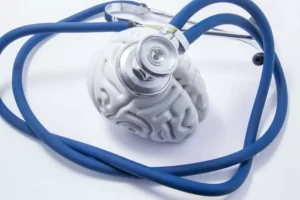
Intoxication is a state that occurs when the affected person has consumed enough alcohol or drugs to alter their mood and abilities. Mental or physical impairments can include slurred speech, difficulty walking, and disorientation. Intoxication also can be detected by Breathalyzer and blood testing. The majority of the metabolic acidosis occurs from glycolic acid. One form of morbidity occurs when oxalate combines with calcium to form calcium oxalate crystals, which accumulate in the proximal renal tubules, causing kidney injury. Hypocalcemia can ensue and cause coma, seizures, and dysrhythmias.

Alcohol Poisoning and Overdose: Signs and Symptoms of Alcohol Overdose

Most states have Good Samaritan laws, which allow people to call 911 without fear of arrest if they’re having a drug or alcohol overdose or see someone else who is overdosing. Teenagers and young adults who drink may be at particular risk for alcohol overdose. stages of alcohol intoxication Research shows that teens and college-age young adults often engage in binge drinking and high-intensity drinking. Drinking such large quantities of alcohol can overwhelm the body’s ability to break down and clear alcohol from the bloodstream.
Moderate intoxication:
Alcohol poisoning is a serious — and sometimes deadly — result of drinking large amounts of alcohol in a short period of time. Drinking too much too quickly can affect breathing, heart rate, body temperature and gag reflex. Safety is the number one priority when it comes to drinking alcohol, and driving is just one well-known area of risk. Even when you’re at home, too much drinking can compromise your physical health, resulting in alcohol poisoning or death.
Differential Diagnosis

For discussion of the individual agents, see Methanol Toxicity and Ethylene Glycol Toxicity; for discussion of pediatric ethanol ingestion, see Ethanol Toxicity. Ethanol withdrawal is a serious and potentially life-threatening problem, which is discussed in Withdrawal Syndromes. Even when it’s not fatal, alcohol can cause some https://ecosoberhouse.com/ unpleasant — and sometimes dangerous — symptoms. The average person would have to consume 25 standard drinks to reach 0.40 percent BAC. Bear in mind that the drink you’re holding might be larger than a standard drink. That said, it’s worth knowing your body’s limits and what to look for if alcohol poisoning is a worry.
- A person’s breathing and blood circulation will be extremely slowed.
- The Centers for Disease Control and Prevention estimates excessive alcohol use causes approximately 88,000 deaths annually in the United States.
- Below are potential alcohol-related medical complications by body system.
A large proportion of the ethanol in liquor is absorbed into the blood from the stomach and the rest from the small intestine. The longer alcohol stays in the stomach, the longer it takes to be absorbed, lowering the rate of intoxication. Therefore, abdominal pain, hemorrhagic gastritis, and vomiting can be observed. Unlike methanol and ethylene glycol, isopropanol does not cause a metabolic acidosis. As a general rule, one standard drink will increase your BAC by 0.02 percent. So, while it might only take four drinks for you to be legally intoxicated, it’d take quite a bit more to kill you.
Is there a lethal BAC?
Symptoms and Signs of Alcohol Toxicity and Withdrawal
Alcohol poisoning
- Even if you’re unconscious, your stomach and intestines continue to release alcohol into your bloodstream, increasing the level of alcohol in your body.
- Stigmata of chronic use include vascular spiders, and, in men, signs of hypogonadism and feminization (eg, smooth skin, lack of male-pattern baldness, gynecomastia, testicular atrophy).
- You don’t need to worry about keeping up with friends — just focus on yourself.
- BAC (blood alcohol content) describes the amount of alcohol in a person’s bloodstream.